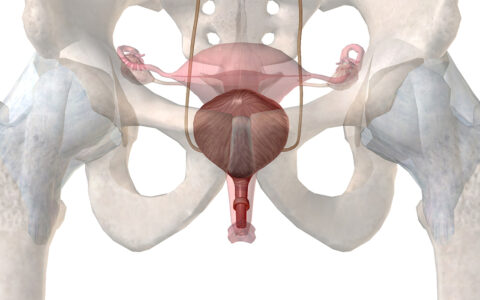Fewer preterm births occurred in Tennessee during the weeks the state was under COVID-19-related stay-at-home orders, as compared to the same time period in recent years, a new study has found.
“Our study is the largest one of this type that’s been done in the U.S.,” said Stephen Patrick, M.D., director of the Center for Child Health Policy at Vanderbilt University Medical Center. Patrick was a co-author of a research letter describing the findings that was published in JAMA Pediatrics. “We have no clear explanation for our findings. Preterm birth is extremely complicated,” he said.
The findings in Tennessee generally agree with some other studies looking at preterm births during the pandemic, including studies done in other states and in other countries, Patrick noted. However, similar studies have also had conflicting results, with researchers not observing decreased preterm birth rates during COVID-19 lockdowns, he added.
Although the Tennessee study did not delve into the causes, the authors hypothesized that the lockdown reduced population movement and “acute cessation of outside-the-home activities may have been associated with less frequent preterm labor.”
An Increase in Complicated Pregnancies
In Tennessee, stay-at-home orders were in effect between March 22, 2020 and April 30, 2020. To account for seasonality, the researchers used state birth records as far back as 2015 to study birth outcomes for that same period in prior years.
“The causes of prematurity are complex, with so much interaction between health and poverty and racism, we do know that many premature births are preventable.”
“Compared with data from 2015 to 2019, all births and preterm births in 2020 had a higher prevalence of Hispanic mothers, induced deliveries, infants requiring respiratory assistance at birth and pregnancy comorbidities, including gestational diabetes and gestational hypertension,” the researchers wrote. Clinical outcome data suggested that more babies were born acutely ill.
Patrick and colleagues found that the preterm birthrate during the COVID-19 lockdown (10.2 percent) was lower than it had been in prior years (11.3 percent). Also, the rates for late preterm births (35 to 36 weeks’ gestation) were lower than in earlier years (5.8 versus 6.5 percent).
After the researchers adjusted for maternal age, education, race/ethnicity, diabetes and hypertension, the adjusted odds ratio for preterm birth in 2020 compared with the five prior years was 0.86, confirming preterm birth was less likely during the lockdown.
Preventable Outcomes, Complex Underpinnings
“The causes of prematurity are complex, with so much interaction between health and poverty and racism,” Patrick said. “We do know that many premature births are preventable.”
Patrick pointed out how poorly the U.S. performs in terms of the frequency of early deliveries when compared to other industrialized, affluent countries that belong to the Organisation for Economic Co-operation and Development. “We are just a little worse than the Slovak Republic and a little better than Chile,” he said.
Patrick also stressed the role of pervasive discrimination. “When you account for all the other factors that could play a role in prematurity, the only logical conclusion to be drawn is that systemic racism plays a big part,” he said. He added that Black infants are also at much higher risk of dying by their first birthday than white infants.
The team’s future research will delve more deeply into how the COVID-19 pandemic affected hospitalized newborns. They have also been investigating how economic consequences of the pandemic affected children in Tennessee and the U.S. overall.





